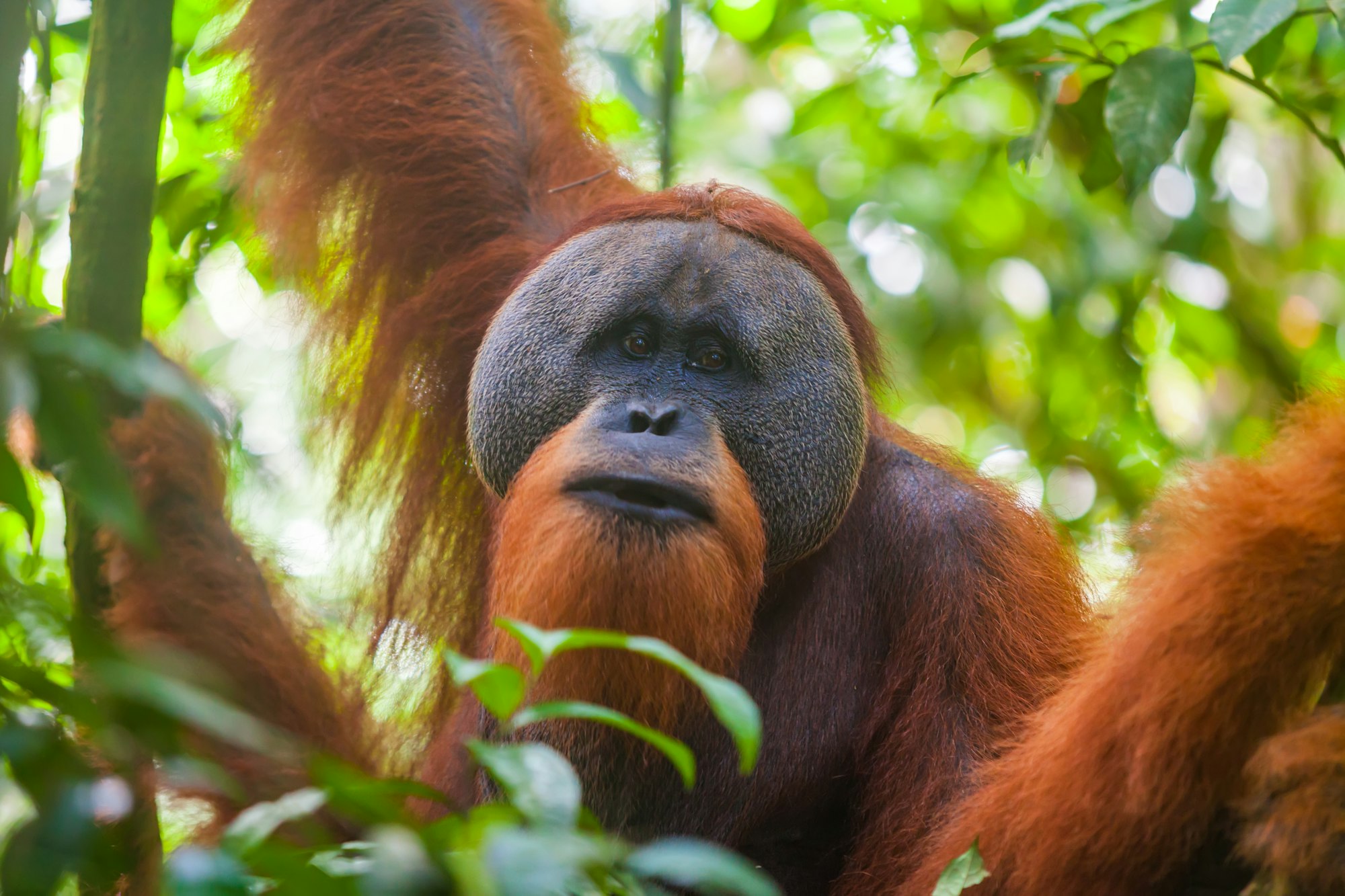Orangutan’s Use of Medicinal Herbs for Self-Treatment
A Groundbreaking Instance of Open Wound Treatment in Nature
In a thrilling development, researchers have watched a male Sumatran orangutan treat his facial wound by applying sap and chewing leaves, marking the first time we’ve seen a wild animal use medicinal herbs like this. This incredible event occurred in a protected Indonesian rainforest. The orangutan, named Rakus, chose the leaves of the Fibraurea tinctoria vine, known for its healing qualities such as reducing inflammation and pain relief.

Comparing Healing Techniques Across Primates
Although self-medication has been observed in other wild creatures, including Bornean orangutans and chimpanzees, these cases typically involved using plants to soothe irritation or ward off infection. Rakus’ deliberate application of plant sap to a wound shows an advanced level of intelligence and knowledge about herbal medicine.
What This Means for Our Understanding of Early Human Healthcare
Tracing the Origins of Wound Care in Humans
This discovery sheds light on how our earliest human ancestors might have cared for wounds. The scientists suggest that the skills needed for these medicinal practices probably existed in the ancestors we share with orangutans, indicating that our own healing practices have deep, ancient roots.
A Historical Perspective on Medicinal Practices
Rakus’ intentional use of plants for medicine parallels how humans have used similar natural remedies, recorded as early as 2200 BC. This connection suggests a common knowledge base that both humans and orangutans might have inherited from our common ancestors, giving us a glimpse into how medical practices evolved over time.
Learn about how a Sumatran orangutan’s clever use of medicinal herbs to heal a wound could help us understand the beginnings of human medicine. Dive into the fascinating world of orangutans and their possible shared heritage with early humans in terms of using natural remedies.

Frequently Asked Questions
1. Why is the observation of Rakus the orangutan so significant?
The observation of Rakus applying medicinal herbs to his wound is a groundbreaking discovery. It’s not just that he used natural remedies—what’s truly astonishing is his intentional and thoughtful application of these remedies. This behavior showcases a sophisticated level of understanding and cognition that we rarely see in the wild. It’s a vivid demonstration that non-human primates can engage in complex health-related practices, reminding us of the deep connections and shared capabilities between them and humans.
2. How does Rakus’ use of medicinal herbs compare to human practices?
Rakus’ methods mirror the ancient human practice of using natural elements to treat injuries. Just as humans have historically turned to nature for cures—using herbs and plants documented in texts as old as 2200 BC—Rakus utilized the sap of the Fibraurea tinctoria vine, recognized for its medicinal properties. This parallel not only highlights the intelligence of orangutans but also suggests that the roots of pharmacology stretch deep into our shared evolutionary past, possibly originating from common ancestors.
3. What could this discovery imply about the evolution of medicinal practices?
This fascinating case could dramatically reshape our understanding of how medicinal practices evolved. By observing Rakus, we gain insights into the possibility that the foundation of medicinal knowledge and the cognitive ability to use it for specific health benefits might have been present long before humans developed structured medical practices. This could mean that our approach to medicine and healing has deep evolutionary roots, shared with other primates who also discovered and utilized the natural world for health benefits long before humans formalized these practices into medicine.
Sources The Guardian


